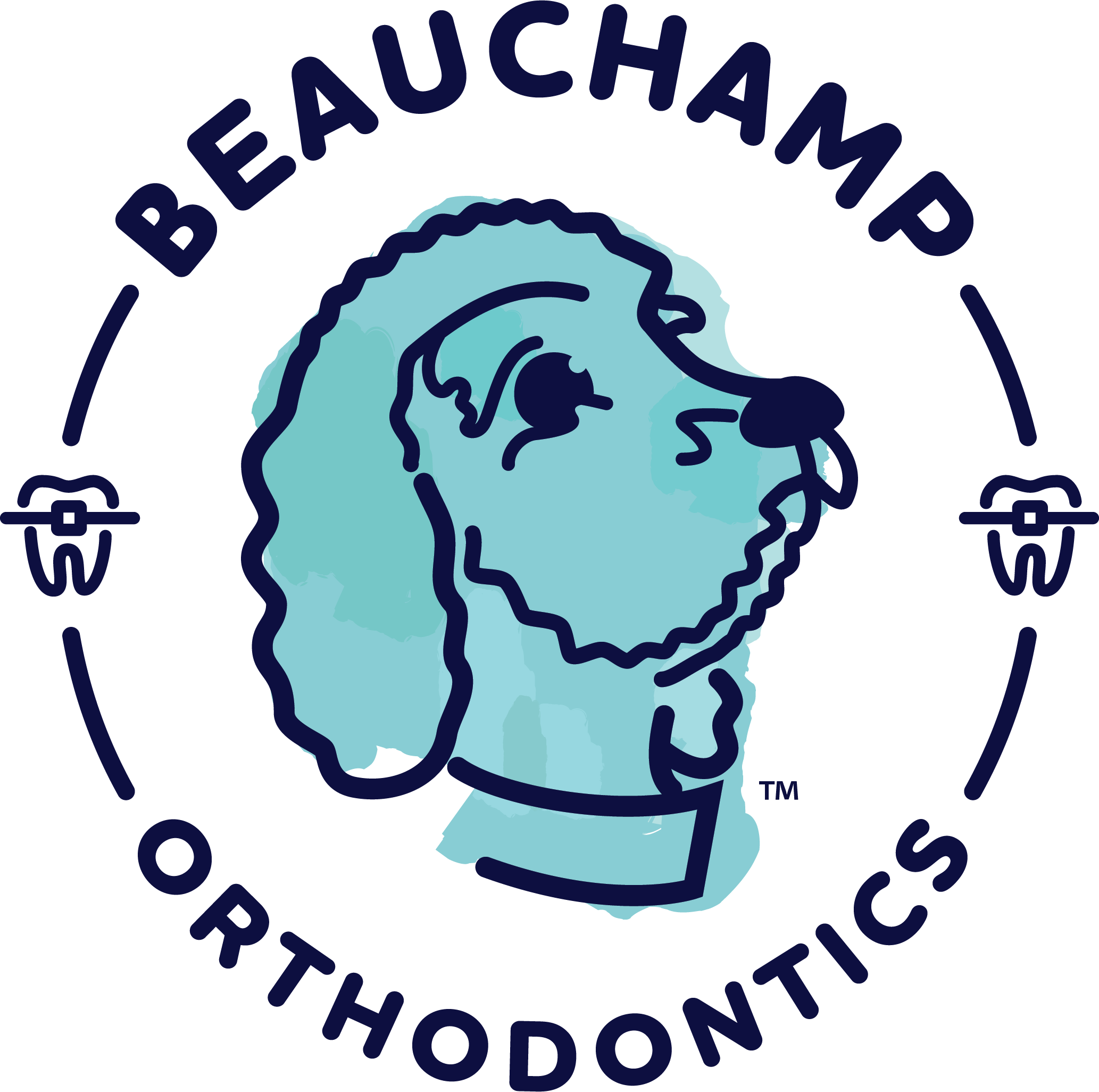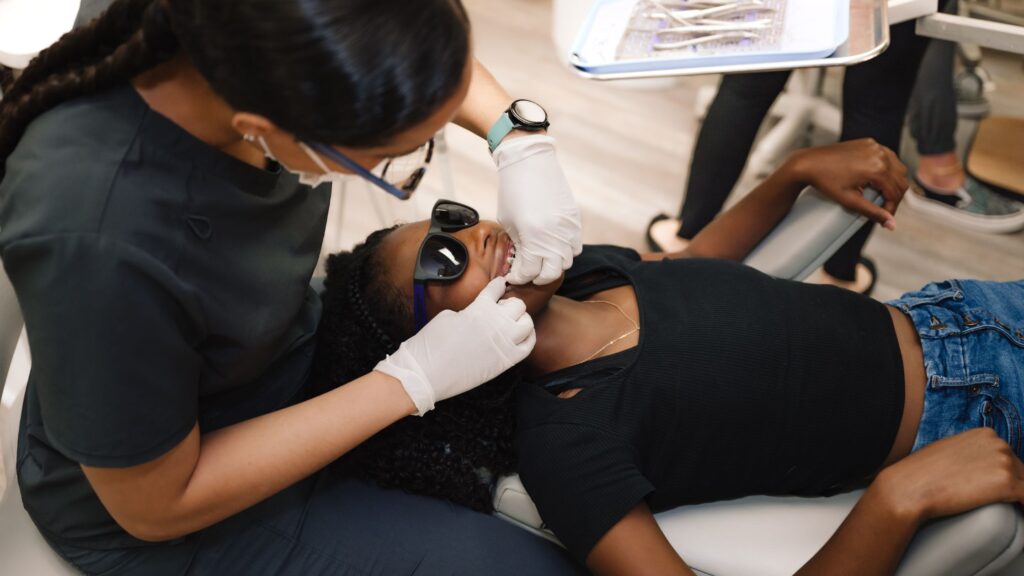As a Port Orange orthodontist, Dr. Beauchamp welcomes children of all ages.
Kids should see a dentist for the first time when they are about 12 months old, no later than six months after the first tooth comes in. Early dental visits are easy and fun, as there isn’t usually anything to be concerned about. But, sometimes, you may start to notice issues.
The first visit to an orthodontic specialist should happen early, too. The American Association of Orthodontists recommends all children see an orthodontist at age 7.
Even though a child will lose all their “baby teeth” between the ages of four and seven, the way the teeth grow in can tell an orthodontist important things. Sometimes, the initial visit is enough to know if a child may need two-phase treatment starting in the near future.
The majority of teeth grow in with no problem, but a Port Orange orthodontist is your biggest advocate and supporter if things don’t go quite as planned. With same-day braces and other treatment, children of all ages have the opportunity to enjoy straight, strong, healthy teeth.
This can help them maintain their dental health as they get older.
Wondering if a child might need braces? The signs can start to show up very young, and they continue to develop throughout childhood. You’re the one who knows your child best, so bring your observations to a Florida orthodontist you can trust.
Here are some of the most important signs your child might need braces:
1. Lots of Trouble with Baby Teeth
Every person is different, and that includes the little folks running around your home, too. Everyone loses primary teeth at slightly different ages. However, if a child is very late getting the full set of adult teeth, loses primary teeth early, or does not seem to be losing them at all, action should be taken.
Remember teething? Both baby teeth and permanent teeth can fail to erupt – that is, break through the gums all the way – on schedule. This is one of the biggest signs that you should see an orthodontist, as it can point to matters with the jaw or gums that can benefit from early attention.
2. Problems Chewing or Biting
When teeth are straight and healthy, it enables them to stay aligned and distribute bite force across all the teeth, guarding any one from excessive wear. Problems chewing or biting are frustrating for children and can have long-term implications when they affect permanent teeth.
If you notice a child struggling to chew food, it’s crucial to communicate and see what’s wrong. Yes, certain tough or chewy foods can be challenging at any age! But, for the most part, chewing food should be easy. Encourage kids not to use their teeth to open wrapping or packages.
3. Crowded Teeth
Braces are useful for all kinds of misalignments, gaps, and more. But among all of the problems a good set of braces can solve, crowded teeth rank near the top. Crowded teeth tend to develop at radical angles, which makes them much more difficult to keep clean than straight teeth.
Noticeable crowding of teeth generally appears on either the top or the bottom dental arch, more rarely on both. Differences in jaw size and shape can contribute to crowding. Crowding can also be a signal that one or more teeth erupted incorrectly, affecting nearby teeth.
4. Oral or Breathing Difficulties
One of the first oral worries to look out for with any child is thumb-sucking. Thumb-sucking is common for lots of kids, but the habit should end by age four or five. Most kids actually stop on their own without having to be encouraged. If it continues beyond this age, it makes crooked teeth more likely.
Another thing to watch for is breathing through the mouth.
(Yes, this can be tough to notice … but it’s worth knowing!)
Under normal conditions, most people will naturally breathe through the nose most of the time. This is good! It’s far better for your mouth, soft palate, gums, and teeth. Breathing through your mouth dries everything out and reduces saliva, the natural protector of the mouth.
Saliva is incredibly powerful as a solvent, natural painkiller, and more. It has a unique function in helping to keep your teeth tidy in the time between your brushing and flossing adventures. Saliva is vital at every age, so lowered saliva production can leave you vulnerable to dental complications.
Breathing through the mouth is usually caused by something else, such as an allergy that leads to sinus build-up and pressure. Since many allergies first become noticeable between 5-7 years of age, it’s wise to talk to an ear, nose, and throat doctor if your child complains of a stuffy nose that doesn’t get better.
5. Painful Biting
The shape of a child’s jaw and the development of the teeth can contribute to urgent, painful accidents. Biting of the tongue or the inside of the mouth can happen when teeth are too crowded for the mouth and jaw. Kids shouldn’t have to think about “tongue posture” to chew and speak without discomfort.
Even for adults, biting the soft tissue inside your cheek is never fun. This should be very rare for people of all age groups. If it happens more than once in a while, it’s time to saddle up and head on out to a Port Orange orthodontist who can take a closer look and make recommendations about braces.
Other Early Childhood Teeth and Jaw Signs That May Mean Braces Are Worthwhile
There are specific issues with the teeth and jaw that can reveal underlying problems – or they might simply go away as a child grows and develops. If you notice any of these, there’s no need to panic. If they are combined with any of the five points above, though, talk to your local orthodontist soon:
Jaw Symptoms
Every one of us has probably heard a little click from the jaw now and then – for example, when opening the mouth very wide for the first time in a while. But what if that clicking is frequent, or there’s noticeable movement and shifting of the jaw? Especially if the jaw seems to protrude or recess, it may indicate a deeper worry.
Teeth That Don’t Meet Up
To keep your teeth healthy, you should never bite down in a way that causes them to meet with any force. Adults tend to have a problem with this, since stress and anxiety can cause tooth grinding, called bruxism. On the flip side, though, the upper and lower teeth should meet fully when they are brought together.
Many people, young and old, have a little bit of an overbite or an underbite. A mild bite issue may not cause any problems at all. If teeth don’t meet early on in life, though, it could mean braces are needed. Untreated orthodontic conditions tend to get worse over time, even throughout the adult years.
Schedule a consultation for Port Orange orthodontic help you can count on.



